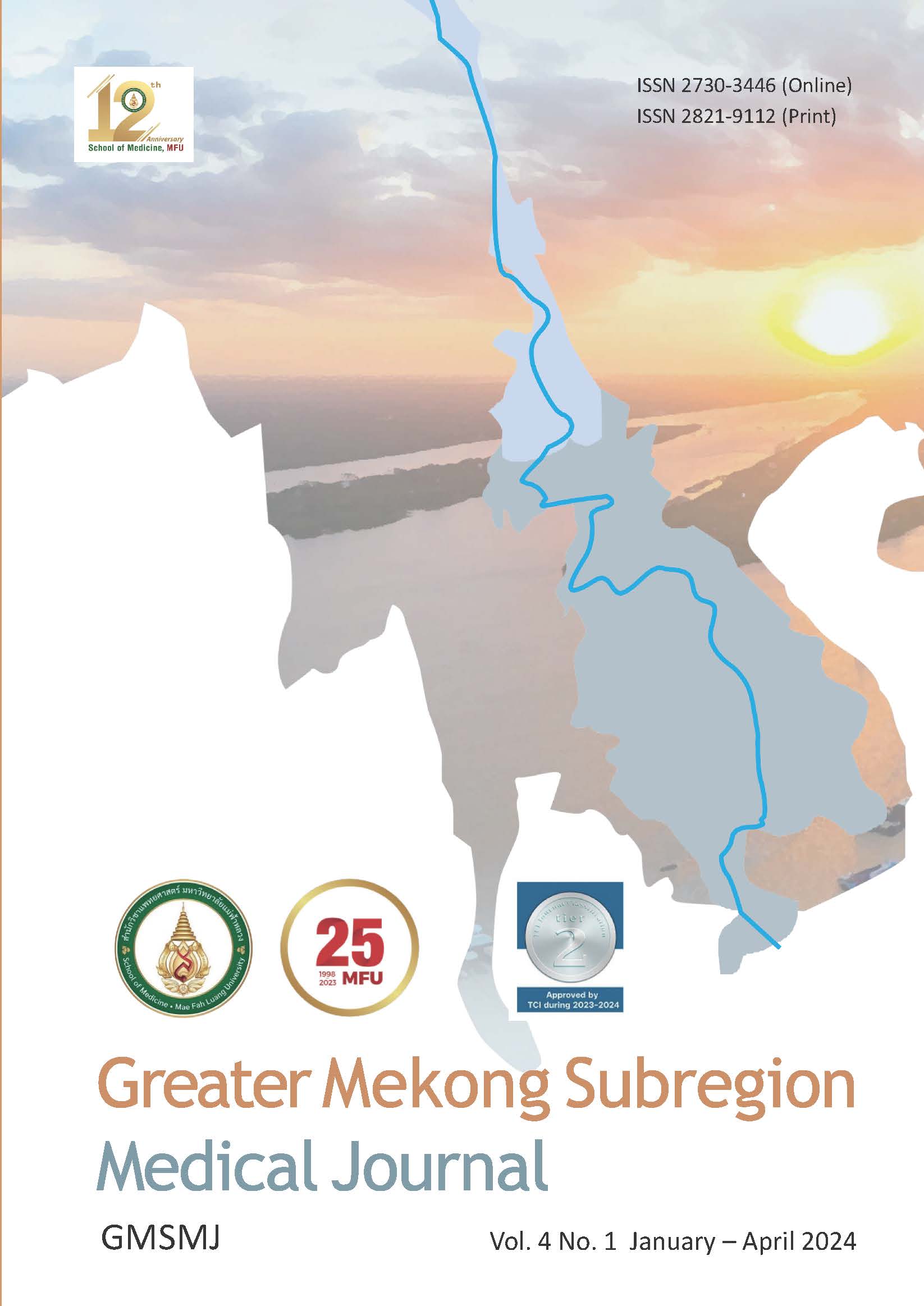Novel Rice Gel for Ultrasound Applications: Physical and Chemical Properties
Keywords:
Ultrasound, Gelatinization, Rice starch, irritation, Ultrasound gel, Water solubleAbstract
Background: Ultrasound gel is a medical device that belongs to the category of consumables, which included in charge of radiological diagnosis and treatment such as X-ray, CT scan, ultrasonography, MRI, radionuclide scan and various radiotherapy, etc. This material is a pharmaceutical product, which produced in a gel state and obtained from synthesized for medical or veterinary. For example, physical examination acts a coupling agent between the body and the medical device. This gel is a product that must be imported from abroad at the level of billions of baht every year.
Objective: This research fabricated medical ultrasound gel within the country. The main raw material was being Thai rice to solve the problem of importing ultrasound gel from abroad.
Materials and Method: Novel rice gels containing different compositions of rice starch (RS) powder and additives. The formulations of gels were composed of RS powder, liquid glycerol, and additives by solution method. Five solutions with different concentration of RS powder (0.5 g, 1 g, 1.5 g, 2 g and 2.5 g) were prepared by solution method. These solutions were dried in electric oven at 65OC for 4 hours. The physical and chemical properties of rice gel characterized by turbidity, viscosity, smell, irritation, pH and moisture content of these gels have monitored.
Results: Results showed that 2 g of RS powder is optimized formulation which had turbidity, high viscosity, pleasant smell, non-irritating and easy to clean. The pH value of this gel was 6.92 ± 0.01, and the moisture content was 0.21 ± 0.07 %, which similar to commercial standard of ultrasound gel (UG).
Conclusion: These results concluded that the application of RS in gel ultrasound was safe and effective for replacement commercial gel ultrasound. This gel should be studied on image quality in ultrasound examination for next step.
References
Hendee WR, Cross sectional medical imaging: a history. Radiographics. 1989; 9 (6): 1155-80. https://doi.org/10.1148/radiographics.9.6.2685939
Watson T, Young S, Therapeutic Ultrasound. Electrotherapy: Evidence Based Practice. T. Watson. Edinburgh, Churchill Livingstone - Elsevier, 2008.
Lutz HT, Basics of Ultrasound, in: H.A. Gharbi (Eds.), Manual of Diagnostic Ultrasound in Infectious Tropical Diseases, Springer Science & Business Media, Newyork, 2006, pp. 1-19. https://doi.org/10.1007/3-540-29950-5
Information on https://www.accessdata. fda.gov/cdrh_docs/pdf13/K130581.pdf
Lertchaiporn M, Klandima S, Kruatrachue A, Layangool T, Pethdumrongsakul A. A comparative study between new formulated and commercial ultrasound gel at Queen Sirikit National Institute of Child Health, Thai Pediatric Journal. 2009; 16 (3): 147-51.
Luewan S, Srisupundit K, Tongsong T. A Comparison of Sonographic Image Quality between the Examinations using Gel and Olive Oil, as Sound Media, J. Med. Assoc. Thai. 2007; 90 (4): 624-7.
Reis RL, Neves NM, Mano JF, Gomes ME, Marques AP, Azevedo HS. Natural- Based Polymers for Biomedical Applications, 1st Edition, in: Sousa RA, Correlo VM, Chung S, Neves NM, Mano JF and Reis RL (Eds.), Processing of starch-based blends for biomedical applications, Elsevier, New York, 2008, pp. 85-105. https://doi.org/10.1533/9781845694814.1.85
Waterschoot J, Gomand SV, Willebrords JK, Fierens E, Delcour JA, Pasting properties of blends of potato, rice and maize starches, Food Hydrocoll. 2014; 41: 298-308. https://doi.org/10.1016/j.foodhyd.2014.04.033
Information on https://www.thairiceexporters. or.th/List_%20of_statistic. htm.
Vongsurakrai V, Varavinit S, Product of Spray Dried Rice Starch (Era-Tab®) and its Utilization in Pharmaceutical Industry, Adv. Mat. Res. 2010; 93-94: 672-74. https://doi.org/10.4028/www.scientific.net/AMR.93-94.672
G-J.E. Nychas, E. Panagou, 1 - Microbiological spoilage of foods and beverages, Food and Beverage Stability and Shelf Life. 2011, pp 3-28. https://doi.org/10.1533/9780857092540.1.3
Arvanitoyannis CG, Biliaderis H, Kawasaki N. Biodegradable Films Made From Low Density Polyethylene (LDPE), Rice Starch, and Potato Starch for Food Packing Applications: Part 1. Carbohydr. Polym. 1998; 36 (2): 89-104. https://doi.org/10.1016/S0144-8617(98)00016-2
Laohakunjit N, Noomhorm A. Effect of Plasticizers on Mechanical and Barrier Properties of Rice Starch film, Starke. 2004; 56 (8): 348-56. https://doi.org/10.1002/star.200300249
Sun J, Zuo X-B, Fang S, Xu H-N, Chen J, Meng Y-C, Chen T. Effects of cellulose derivative hydrocolloids on pasting, viscoelastic, and morphological characteristics of rice starch gel, J. Texture stud. 2017; 48 (3): 241-8. https://doi.org/10.1111/jtxs.12233
Saha D, Bhattacharya S. Hydrocolloids as thickening and gelling agents in food: a critical review, J. Food Sci. Technol. 2010; 47 (6): 587-97. https://doi.org/10.1007/s13197-010-0162-6
Nagaraj P, Sasidharam A, David V, Sambandam A. Effect of Cross-Linking on the Performances of Starch-Based Biopolymer as Gel Electrolyte for Dye-Sensitized Solar Cell Applications, polym.2017; 9 (12): 667. https://doi.org/10.3390/polym9120667.
Downloads
Published
How to Cite
Issue
Section
License
Copyright (c) 2024 Greater Mekong Subregion Medical Journal

This work is licensed under a Creative Commons Attribution-NonCommercial-NoDerivatives 4.0 International License.






